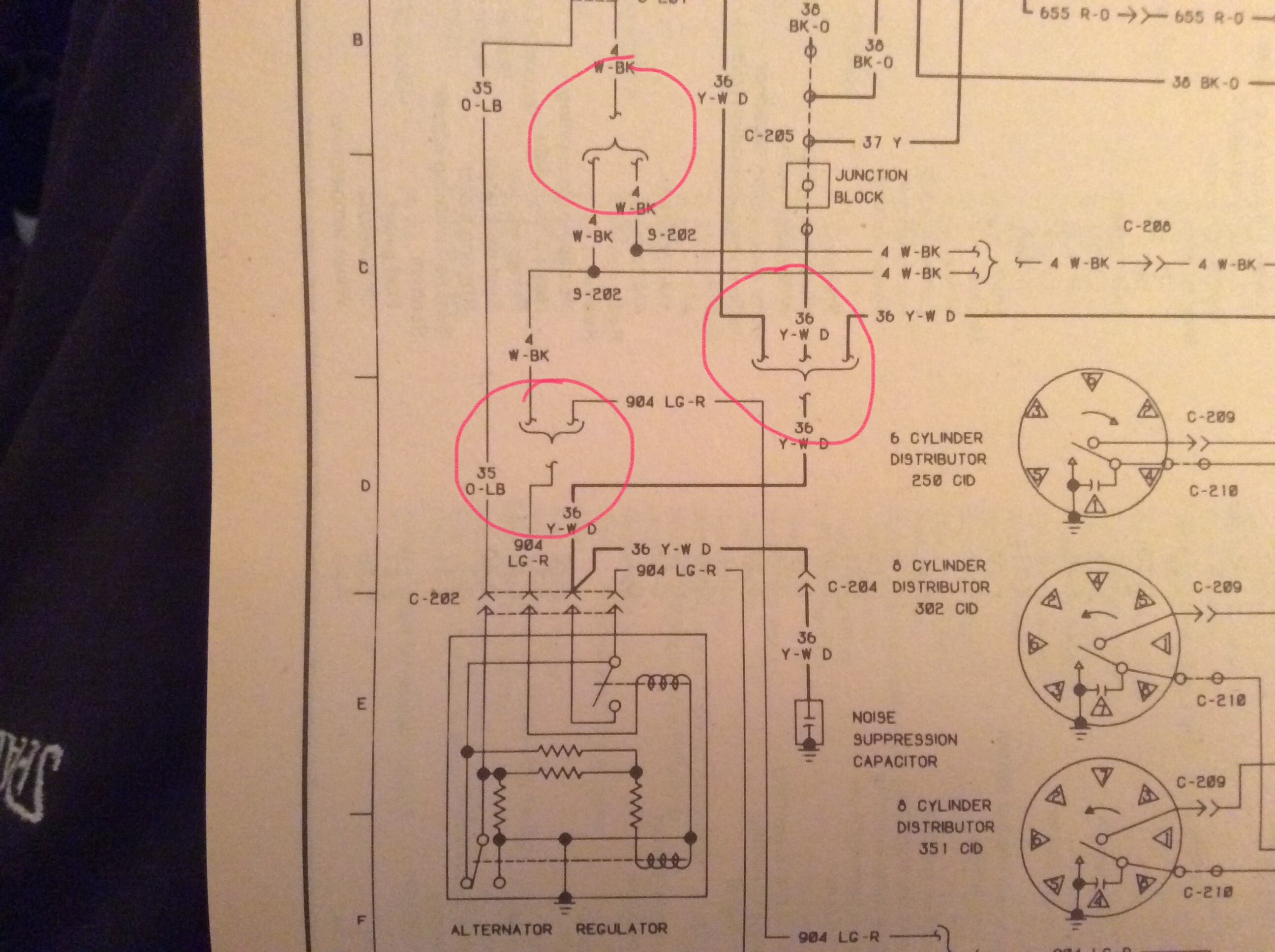- Joined
- Nov 7, 2013
- Messages
- 1,594
- Reaction score
- 286
- Location
- Amsterdam, The Netherlands
- My Car
- 1973 Mustang Grande 351C 2V, built on the very last production day (July 6, 1973) for Grande's.
Hey guys,
Everytime I'm checking the wiring diagrams I'm never sure what it is inside these circles:

Does 1 wire split in two? Or does it go one way or the other depending on a certain part being present (elec. choke for instance).
If someone can please explain how to read the inside of these circles (in general, not specifically these) that would be much appreciated
Thanks,
Vincent.
Everytime I'm checking the wiring diagrams I'm never sure what it is inside these circles:

Does 1 wire split in two? Or does it go one way or the other depending on a certain part being present (elec. choke for instance).
If someone can please explain how to read the inside of these circles (in general, not specifically these) that would be much appreciated
Thanks,
Vincent.




